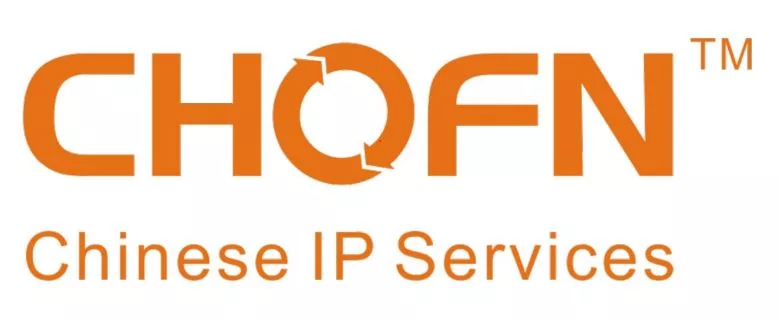The Chinese Trademark Office (CTMO) received nearly 2.9 million new trademark applications in 2015, ranking No.1 in the world for 14 consecutive years. The application number increased approximately ten times compared with 2002 when CTMO received around 0.3 million new applications and ranked the No. 1 for the first time. There are more than 12 million registered trademarks in the Chinese Trademark Register as of 2015.
On the one hand, such a huge number makes CTMO the busiest trademark authority in the world and it is very common for the examiners to work overtime. On the other hand, the existence of such big number of registered trademarks makes it more and more difficult to register new trademarks. The rate of rejection or partial rejection in 2015 was approximately 38%, which reflected the difficulty to successfully register new trademarks in China, due to the increasing chances of citation.
Certainly, pre-filing search will help to identify obstacles, change the trademark and increase the chances of success. But if the changed trademark is still obstructed by prior trademarks, how should the applicants proceed? The potential resolutions include but are not limited to filing arguments for dissimilarity, negotiating for letter of consent, requesting for invalidation, opposition or non-use cancellation according to the specific situations. Among such resolutions, non-use cancellation turns out to be more and more effective. I will explain the reasons and the procedures of non-use cancellation in China through this article.
There are many prior registered trademarks not in use for the following reasons:
- China adopts the first-to-file principle and there is no use requirement in China for filing a new application. CTMO will not take the initiative to check whether a registered trademark is in use unless someone files non-use cancellation. The principle fails to encourage trademark use, but gives more incentive to registration without use, which is the main reason why there are so many registered marks in the Register but not in actual use.
- Many parties squat or pirate a large number of other's trademarks or imitate other's trademarks, with the purpose to blackmailing the legitimate right holders. The pirates have no true intention to use the marks, and consequently, the pirated trademarks also contribute to the increasing number of non-use trademarks.
- Due to rampant trademark piracy, the first-to-file principle and the complicated Chinese subclass system to judge the similarity of the goods or services, many big companies registered their trademarks in several classes and/or subclasses as a defensive strategy against trademark piracy. These defensively registered trademarks are only for defensive purposes, not for actual use. Therefore, these defensive marks also contribute to the number of non-use trademarks.
- There are still strict restrictions on business operations in some industries (e.g., tobacco, alcohol, weapons), though there is almost no restriction to trademark registration. In such industries, even if there are lots of registered trademarks, most of the registrants are not qualified or allowed to do the corresponding business and the relevant trademarks cannot be put into use in spite of the registered status.
- Statistics in 2012 shows that only around 18% Chinese companies survive more than ten years. It means that some owners of the registered trademarks are already out of business. Due to the absence of use requirements like the USA, these kinds of marks cannot "die" until expiration or failure to renew.
For the above reasons, it is advisable for the rejected trademark owners to check the status of the cited trademark(s). It is possible that non-use will undermine the citation or clear the obstruction.
In China, the non-use cancellation can be initiated by any entity or individual after the trademark is registered for more than three years. To prove the non-use status, a simple investigation report (usually an on-line search result) will be sufficient. After that, the burden of proof will be shifted to the trademark owner who needs to prove the real business use of the trademark during the past three years, counting back from the non-use cancellation filing date. The effective use evidence needs to prove the five necessary elements for use (i.e., date, place, trademark, user's name, goods or services). The evidence should separate or jointly prove the valid use. Otherwise, the use evidence might be challenged.
From this it can be seen that the applicant of non-use cancellation has very light burden of proof whereas the burden for the trademark owner is much heavier. Actually, due to the strict requirements for the valid use evidence, it happens that even the trademark owners who really used its trademark in business in the prescribed three years cannot provide valid use evidence. In addition, there is no need to compensate the applicant if finally the trademark owner files valid evidence and the trademark in question is finally kept in force.
Considering the different burdens of proof, the owners of rejected trademarks should always keep in mind the option of non-use cancellation against the cited trademark(s).
I would also introduce the procedures or non-use cancellation as follows.
- Procedure in
CTMO.
Non-use cancellation shall be filed with CTMO, who shall then notify the registrant to submit valid use evidence. CTMO shall examine the filed evidence and make a decision.
Owing to the heavy workload and backlogs in CTMO, the examiners sometimes have no sufficient time to carefully review each piece of evidence. Some invalid evidence or even fabricated evidence might not be noticed during this procedure.
During this procedure in CTMO, the cancellation applicant will not be served with a copy of the evidence filed by the registrant. The applicant does not have an opportunity to check and challenge the authenticity of the evidence, which is a procedural defect unfair to the applicant. - Procedure in Trademark Review
and Adjudication Board (TRAB).
Either of the parties concerned, if dissatisfied with CTMO's decision, can appeal to TRAB. During this procedure, the non-use cancellation applicant has an opportunity to check and challenge the authenticity of the evidence, as the TRAB shall serve a copy of the evidence to the applicant. TRAB will make a decision based on two parties' opinions or the cross-examined evidence.
This procedure in TRAB is very important as the applicant has opportunity to challenge the authenticity of the evidence, and correct any mistake made in the previous procedure in CTMO. For the applicant's important cases, it is even advisable to spend more resources in deeper investigation to find the authenticity of some key evidence. It happens in some cases that a deep investigation indeed reveals problems relating to authenticity. - Procedure in
Courts.
Lawsuits can be filed with the Beijing IP Court if either party is dissatisfied with TRAB's decision. Either of the parties shall be a plaintiff, the other the third party, and the TRAB always the defendant.
During the lawsuits, usually the applicant is allowed to continue challenging the authenticity or other weakness of the registrant's use evidence, but it will be much more time- and cost-consuming than the previous procedure in TRAB. In addition, it is possible that the applicant will not be allowed to submit some evidence during this procedure to challenge the registrant's use evidence if the Court believes that the applicant could provide such evidence during the procedure in TRAB but the applicant intentionally gave up such chances. Therefore, it is advisable to spare no efforts during the procedure in TRAB.
If any of the three parties, with the TRAB included, are dissatisfied with the first-instance Beijing IP Court's ruling, is entitled to finally appeal to the Beijing Higher People's Court.
Other tips and important points for initiating non-use cancellation procedure:
- If the applicant does not want to expose its identity to the registrant of the trademark, it can file the cancellation under a third party's name;
- CTMO accepts both applications to cancel a trademark registration in relation to all or only part of the designated goods or services. In some cases, focus on the key or relevant goods or services can increase the chances of successful cancellation;
- Many recent decisions made by TRAB indicate that OEM use evidence alone is insufficient, though several years ago such use evidence was considered sufficient to maintain a trademark; and
- It happened that a trademark owner applied for a back-up application soon after it received the non-use cancellation notification. As such, non-use cancellation applicant needs to make sure to have a trademark alive with an application date as early as possible, in order to block the back-up application; and
- For the big companies who defensively register its trademarks in more classes and subclasses but do not use such trademarks, it is advisable to file back-up application(s) in relevant classes where non-use cancellation arises, particularly for their important house trademarks.
In conclusion, non-use cancellation is a pragmatic and effective tactic to overcome citation in China, if used skillfully after carefully analysis of the specific circumstances.
(This article was originally published in The Trademark Lawyer Magazine of CTC Legal,Issue 3, Page 36-39)
The content of this article is intended to provide a general guide to the subject matter. Specialist advice should be sought about your specific circumstances.

